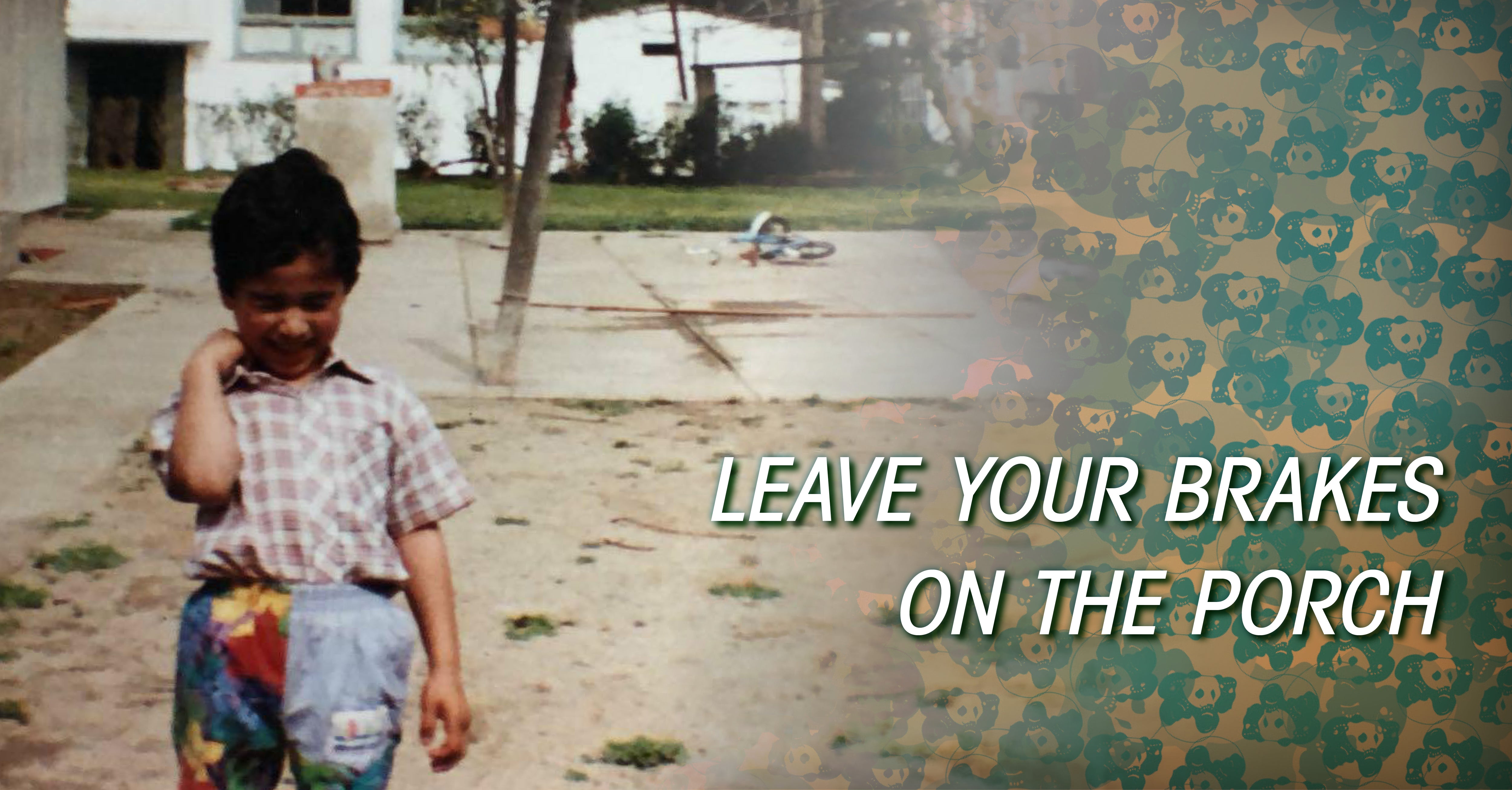
Leave Your Brakes on the Porch

When I was five years-old, we lived in Chile in the sleepy little town of Illapel. When my sister and I were kids, we lived the Chilean version of the bicycle lifestyle you see in 80s movies—riding our bikes all over the neighborhood to see visits friends houses or to meet up to play soccer.
We would eventually graduate to fancy mountain bikes, but one of my first two-wheeled adventure wagons was a beat-up hand-me-down with faded blue paint and no brakes. As long as the wheel’s turned, I was set. I’d just put my feet down and let my tennis shoes scrape me to a stop.
At the time, we lived in a housing complex up the hill from a flour factory where my dad worked. The flour factory was fenced off, and at the bottom of the hill was a big gate, which was always locked shut. On a sunny day, I’d start at the top of the hill, looking out over the trees in the valley to the tan mountains in the distance, and coast to the bottom.
With a vigilant stomp of my feet and a little tenacity, the bike would slide to stop in a cloud of dust. I’d push the bike back to the top and do it again.
One day, I was so excited to ride my bike that I ran out the door, hopped on ol’ blue, and took off down the hill. As the hillside whooshed by, I look down to see my bare feet floating in the wind. I had left my tennis shoes—my improvised braking system—on the porch. I was going faster now. Looking up, the gate was getting closer and closer.
I slammed into the gate at what felt like Back to the Future speed and got what in retrospect was probably my first concussion. I big lump sprouted on my forehead as the wheels on my bike spun aimlessly in the dirt somewhere nearby.
I never learned my lesson.
Whatever programming in my brain that put me on the bike before I check for my shoes has driven my life for as long as I can remember. Diving into the adventure ahead has always been first priority. If something went wrong or something unexpected appeared in my path, I never slowed down. I just let the momentum carry me. That’s meant a lot of crashes and bruises and a few near-disasters, but that good-hearted recklessness might somehow be my best asset.
Here are some other examples where I just charged ahead without thinking too far down the hill:
- I signed up for my first jiu-jitsu tournament before ever taking a jiu-jitsu class.
- I walked into my first judo class as a white belt in a room of judo black belts.
- I placed my first order of Inverted Gear gis before I learned about customs and imports.
- I hit on a referee working a jiu-jitsu tournament after she yelled at another competitor (and now we’re married).
Other articles:
Quick links
Contact us
About us
Quality BJJ gear at fair prices, available all year. Founded in 2012 to provide an alternative to high-cost, limited edition gis. Dive into the BJJ lifestyle with us—join the Panda Nation!"
